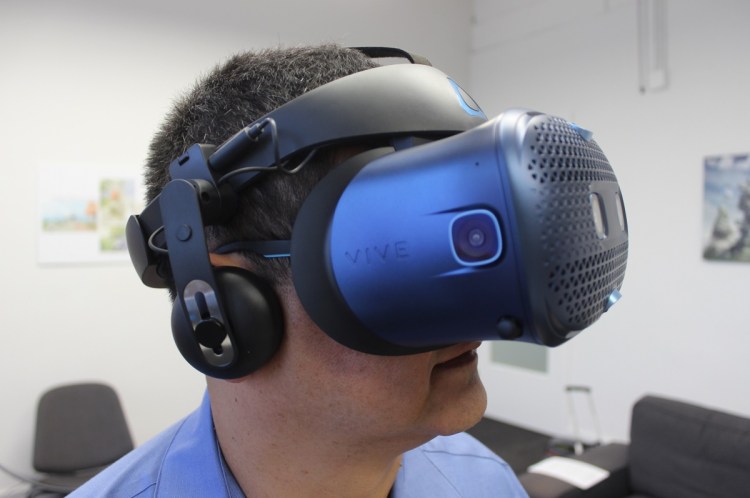Virtual reality isn’t the massive business that many of us thought it would turn into back in 2015 and 2016. But it’s still chugging along with new software and hardware like HTC’s Vive Cosmos. The $699 headset is available now and represents a series of upgrades over first-generation Vive systems. But in my testing, a core function of the Cosmos has failed so consistently that none of its other improvements matter.
The Vive Cosmos has a combined resolution of 2880-by-1700, which is 88 percent more pixels than the original Vive. The head-mounted display is also much more comfortable and easier to wear. And unlike the original Vive, Cosmos doesn’t require external tracking beacons. Instead, it uses an array of cameras.
But it’s that tracking that has brought the whole thing down for me. It doesn’t work. Or, at least, it stops working often enough that I consider the whole thing busted.
Vive Cosmos needs better tracking
The idea behind Vive Cosmos and its tracking is good. Get rid of the external “lighthouses” that you had to hang on your wall or mount on tripods with the first Vive. Instead, use cameras to calculate the headset movement. This “inside-out” tracking is something we’ve seen in a number of other headset, such as the Oculus Quest.
June 5th: The AI Audit in NYC
Join us next week in NYC to engage with top executive leaders, delving into strategies for auditing AI models to ensure fairness, optimal performance, and ethical compliance across diverse organizations. Secure your attendance for this exclusive invite-only event.
But what works extremely well for the Quest, doesn’t for the Cosmos. The issue is that the headset seems to struggle to understand what it’s looking at. I have a pretty standard office with a lot of space for room-scale VR. I also have what I would consider more than enough light. The Cosmos disagrees on that point.
What happens is that in the middle of a game, the Cosmos will stop and say that it lost tracking and I should try turning on more lights. I do not have any more lights, and I don’t want anymore.
And I’m not gonna hesitate to blame the Vive Cosmos for the failure here. I tested the Oculus Quest in the same space with lights on and off, and it didn’t have any problems. Updates could improve this, but I wouldn’t wait on that.
If you want a high-end VR headset with a high-resolution display, get the Index from Valve. It does require base stations for tracking, but I don’t mind that for PC VR. If I have to connect the headset to a computer anyhow, setting up some lighthouses is hardly inconvenient.
And I would recommend the Vive Cosmos alternatives on both ends of the spectrum. The Valve Index on the high end at $1,000. And the wireless, standalone Quest is great starting at $400. You can even use that on PC now with the Oculus Link cable.
As-is, the $700 Cosmos isn’t as convenient as the Quest or as capable as the Index. And that makes it easy to pass up.


